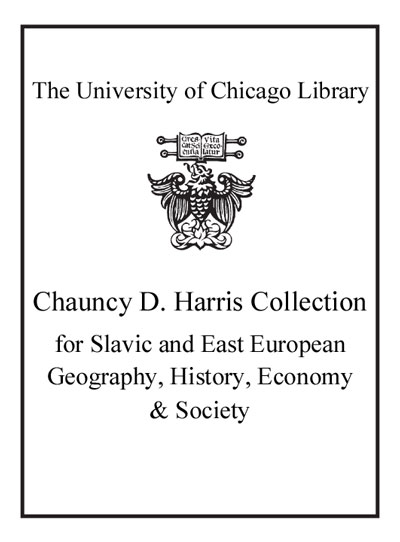Democracy by decree : prospects and limits of imposed consociational democracy in Bosnia and Herzegovina /
Saved in:
| Author / Creator: | Merdzanovic, Adis, author. |
|---|---|
| Imprint: | Stuttgart, Germany : Ibidem-Verlag, [2015] |
| Description: | xiv, 421 pages ; 24 cm |
| Language: | English |
| Subject: | |
| Format: | Print Book |
| URL for this record: | http://pi.lib.uchicago.edu/1001/cat/bib/10377251 |
Table of Contents:
- Acknowledgements
- List of Acronyms
- 1. Introduction
- 1.1. Case Selection
- 1.2. Methodology
- 1.3. Structure
- Part I. Nationalism
- 2. Theories of Nationalism-A Brief Survey
- 2.1. Nation and Nationalism
- 2.1.1. Modernists and Primordialists
- 2.1.2. The 'Nation'
- 2.1.3. Nationalism
- 2.2. Analysing Nationalism in Contextual Terms
- 2.2.1. The geographical and historical contexts
- 2.2.2. The procedural context
- 3. A Comparative Look at Western Balkan Nationalisms
- 3.1. Elements of Commonality Within Bosnian, Croat, and Serb Nationalisms
- 3.1.1. Ethnicity
- 3.1.2. Historical association
- 3.1.3. Religion
- 3.1.4. Language
- 3.2. Nationalism in Serbia-Martyrdom and Uprising
- 3.2.1. Before the uprisings: The ideological foundation of the Serbian uprising
- 3.2.2. From the revolution to the national state and beyond
- 3.3. Nationalism in Croatia-Historic Statehood Rights
- 3.3.1. The Illyrian movement
- 3.3.2. The Croat national movement
- 3.4. Yugoslavtsm-Two Forms of a Failed Idea
- 3.4.1. Yugoslavism-Jugoslovenstvo
- 3.4.2. Yugoslav 'brotherhood and unity'
- 3.4.3. Renewed nationalism and the collapse of Yugoslavia
- 4. Nationalism in Bosnia-Herzegovina
- 4.1. Historical Roots of Bosnian Identity: Medieval Bosnia
- 4.2. Bosnia Under Ottoman Rule
- 4.3. Bosnian Muslims, Bosnian Croats, Bosnian Serbs
- 4.3.1. 'National' agitation under Ottoman rule
- 4.3.2. Nationalism in Habsburg Bosnia
- 4.3.3. Bosnian national identities in the two Yugoslavias
- 4.4. Conclusion
- Part II. Consociationalism
- 5. A Brief Introduction to Consociational Theory
- 5.1. Contemporary Consociationalism and its Critics
- 5.2. The Original Model and Elite Behaviour
- 5.3. The Origins of Cooperation
- 6. 'imposed Consociation'
- 6.1. Intervention and Imposition
- 6.2. Consociational Democracy and the International Context
- 6.3. The Concept of 'Imposed Consociation'
- 6.3.1. Assumptions: minimal consensus and group cohesion
- 6.3.2. Elite behaviour in imposed and ordinary consociations compared
- 6. A Anticipated Critique of the Concept of the 'Imposed Consociation'
- Part III. Bosnia and Herzegovina
- 7. Consociationalism in Bosnia-Herzegovina
- 7.1. The Central State
- 7.2. The Entities
- 7.3. People vs. Citizens
- 7.4. Brcko District
- 7.5. Bosnian Consociation
- 7.6. The High Representative
- 8. Political Elites and Political Quarrels
- 8.1. The Historical Statehood of Bosnia-Herzegovina
- 8.2. The People and the Society
- 8.3. Debating the State
- 8.3.1. The relationship between the state and the entities: more, or less federalism?
- 8.3.2. The Croat Question
- 8.3.3. The misuse of the Sejdic and Find verdict
- 9. The Office of the High Representative from 1996 to 2013
- 9.1. Carl Bildt (1996-1997)
- 9.1.1. The political landscape before the first post-war elections
- 9.1.2. Setting up the new state
- 9.1.3. The efforts of the High Representative
- 9.2. Carlos Westendorp (1997-1999)
- 9.2.1. The pre-Bonn phase
- 9.2.2. Towards the Bonn powers
- 9.2.3. The post-Bonn powers phase
- 9.3. Wolfgang Petritsch (1999-2002)
- 9.3.1. Dependency vs. ownership
- 9.3.2. The Alliance for Change
- 9.3.3. The Mrakovica-Sarajevo Agreement and its implications
- 9.4. Paddy Ashdown (2002-2006)
- 9.4.1. The end of ownership and the African chief approach
- 9.4.2. The push and pull of Euro-Atlantic integration
- 9.4.3. The assumption of full gubernatorial power
- 9.5. Christian Schwarz-Schilling (2006-2007)
- 9.5.1. Taking ownership seriously once again
- 9.5.2. The closure of the OHR
- 9.5.3. The April package and the 2006 elections
- 9.6. Miroslav Lajcak (2007-2009)
- 9.6.1. The doctrine of non-intervention
- 9.6.2. The showdown of 2007
- 9.6.3. International divisions and the 5+2 agenda
- 9.7. Valentin Inzko (2009-Present)
- 9.7.1. The contemporary role of the OHR and the Bonn powers
- 10. Bosnia-Herzegovina as an 'Imposed Consociation'
- 10.1. The Assumptions of 'Imposed Consociation' in the Bosnian Context
- 10.2. The OHR as the Prototypical International Regulating Body (IRB)
- 10.3. The Incentive Structures in Contemporary Bosnia-Herzegovina
- Part IV. Concluding Remarks
- 11. Conclusion
- Epilogue
- 12. A Short Postscript on Other Cases: Macedonia and Kosovo
- 12.1. The Historical Context
- 12.2. The Assumptions of an 'imposed Consociation' in Macedonia and Kosovo
- 12.3. The International Regulating Body
- 12.4. The Incentive Structure in Post-Conflict Macedonia and Kosovo
- 12.5. Conclusion
- 13. Annex
- 13.1. Topic Guide for in Interviews with Local Political Leaders
- 13.2. List of Interview Partners
- 13.3. List of OHR Decisions
- 14. Bibliography

